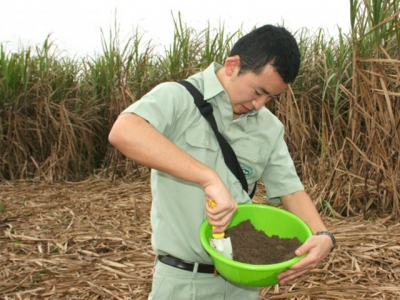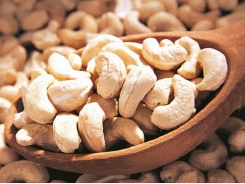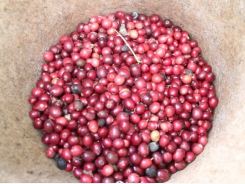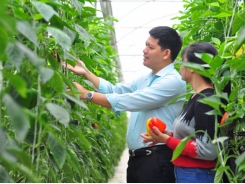The soil nutrient map helps to save fertilizers

The soil nutrient map of the current status in the sugarcane material area in the east of Gia Lai province has helped farmers to use fertilizers reasonably, economically, and effectively, helping to reduce costs.
Soil samples are analyzed for pH, absorption capacity, hummus, adequate phosphorus, effective potassium, and other criteria. Photo: Vu Dinh Thung.
After ten years of continuously taking soil samples on the sugarcane material area in the east of Gia Lai province to analyze and map the current status of soil nutrients, by the end of 2020, the Vietnam - Japan Fertilizer Company ('JVF') has handed over the soil nutrient map of the largest sugarcane material area in the country for Quang Ngai Sugar Joint Stock Company ('QNS').
According to Mr. Nguyen Hoang Phuoc, Deputy Director in charge of raw materials for An Khe Sugar Factory, JVF and QNS coordinated to collect soil samples at different locations throughout the raw material area of 4 districts, in the east of Gia Lai province, including KBang, An Khe, Dak Po, Kong Chro.
Soil samples were taken from each field with an area larger than 1 hectare. After collecting soil samples, JVF's technicians used 205 samples in 39 wards and communes in 4 districts and towns in the east of Gia Lai province, with an area of 81,064 hectares. QNS's sugarcane material area is about 30,000 hectares.
The samples were removed from roots and stones and dried at a very low temperature for 48 hours. The soil sample was finely ground and sieved on a sieve with a millimeter-sized pore. Soil samples were analyzed for pH, absorption capacity, hummus, adequate phosphorus, effective potassium, and other criteria.
From the soil nutrient map, An Khe Sugar Factory, a unit under QNS, has oriented sugarcane farmers to sugarcane production in the sugarcane production area located in 4 districts and towns in the east of Gia Lai province, including KBang, An Khe, Dak Po, and Kong Chro, use fertilizers appropriately to develop raw material areas in a sustainable way, reduce costs, increase economic efficiency and increase competitiveness in the market.
In the current spike in fertilizer prices, this solution is helping sugarcane farmers in the country's largest sugarcane material area feel secure in production.
Macronutrients are an essential source of nutrients for sugarcane, helping to ensure the yield and quality of the raw material area. According to the growth and sugarcane development stages, macronutrients need to be provided in the correct dose, in the proper ratio through the respective fertilization periods.
In terms of phosphorus, it in most of the raw material area is at a level that meets the needs of sugarcane. But in fact, sugarcane cannot absorb 100% of the available phosphorus. Therefore, it is necessary to maintain an adequate amount of fertilizer. Fertilize regularly to ensure soil fertility, as well as maintain productivity and limit soil degradation.
In terms of potassium, most of the sugarcane growing soil in the raw material area has low effective potassium content, so farmers need to fertilize with a high rate of potassium right at the first application. Fertilizer needs to be applied three times to both save fertilizer and increase efficiency.
In terms of nitrogen, soil with high humus content has high nitrogen nutrition and vice versa. In the soil, nitrogen is a nutrient element that fluctuates wildly. Therefore, nitrogen fertilization is usually based on the plant's nutritional needs, the plant's yield, and the soil's humus content.
Based on the current yield, nutritional needs of sugarcane, and the status of nutrients in the soil, JVF recommends that sugarcane farmers use an adequate quantity of fertilizer for sugarcane.
Fertilizer's quantity for sugarcane grown in Kong Chro district and a part in Dak Po district that can be applied is 800 kilograms per hectares, in which the application of NPK Vietnam-Japan 15-15-15+TE (Chitosan) when sowing is 400 kilograms per hectares; the additional application of NPK 17-6-17+10S+TE (Chitosan) is 400 kilogram per hectares; Other areas need to maintain the application of 1,000 kilograms per hectares to ensure improved yield and optimize production costs.
In addition, using products with the addition of Chitosan active ingredient helps to increase drought tolerance and disease resistance for sugarcane throughout the growth and development period.
In terms of acidity, most of the soil in Gia Lai province's eastern raw material area is acidic to moderately acidic. So farmers need to pay attention to adding lime to raise the pH to the optimal level for sugarcane to grow and develop. It is also a solution that contributes to providing more intermediate nutrients for sugarcane, helping to improve soil texture, limiting harmful bacteria and fungi, and enhancing the activity of beneficial microorganisms in the soil.
For areas with a pH lower than 5.5, applying lime from 1,000 kilograms per hectares for each crop is necessary. Areas with higher than 5.5 pH can apply lime from 500-800 kilograms per hectares for each crop.
In terms of humus, a very practical and cheap, easy to apply method that can maintain and improve soil humus is to keep the sugarcane leaves and by-products after harvest, then chop and then bury the sugarcane leaves in the soil.
The above solution is also a way to return the organic and nutritional resources that sugarcane has taken away from the soil during its growth and development. After harvest, keeping sugarcane leaves to cover sugarcane fields also contributes to limiting water evaporation and retaining soil moisture in the dry season.
“From the soil nutrient map of the sugarcane material area in the east of Gia Lai province, the Vietnam - Japan Fertilizer Company produces fertilizers with a formula suitable for the soil of the raw material area.
The soil nutrient map shows which soil lacks a substance; during cultivation, farmers add that substance. The dose of fertilizer used is suitable, only adequate for plants.
The above solution helps farmers save the cost of fertilizing sugarcane, especially in the context of increasing fertilizer prices like today”, said Mr. Nguyen Hoang Phuoc, Deputy Director in charge of raw materials for An Khe Sugar Factory.
Related news
Tools

Phối trộn thức ăn chăn nuôi

Pha dung dịch thủy canh

Định mức cho tôm ăn

Phối trộn phân bón NPK

Xác định tỷ lệ tôm sống

Chuyển đổi đơn vị phân bón

Xác định công suất sục khí

Chuyển đổi đơn vị tôm

Tính diện tích nhà kính

Tính thể tích ao




 Alternating wetting and drying (AWD) helps Mekong Delta…
Alternating wetting and drying (AWD) helps Mekong Delta…  Vietnam consults world experience on green agriculture development
Vietnam consults world experience on green agriculture development